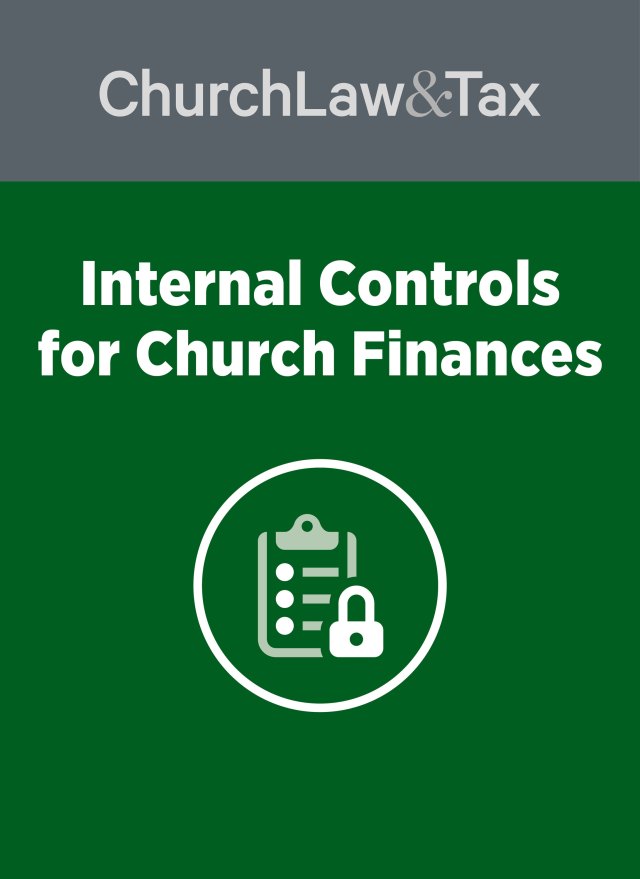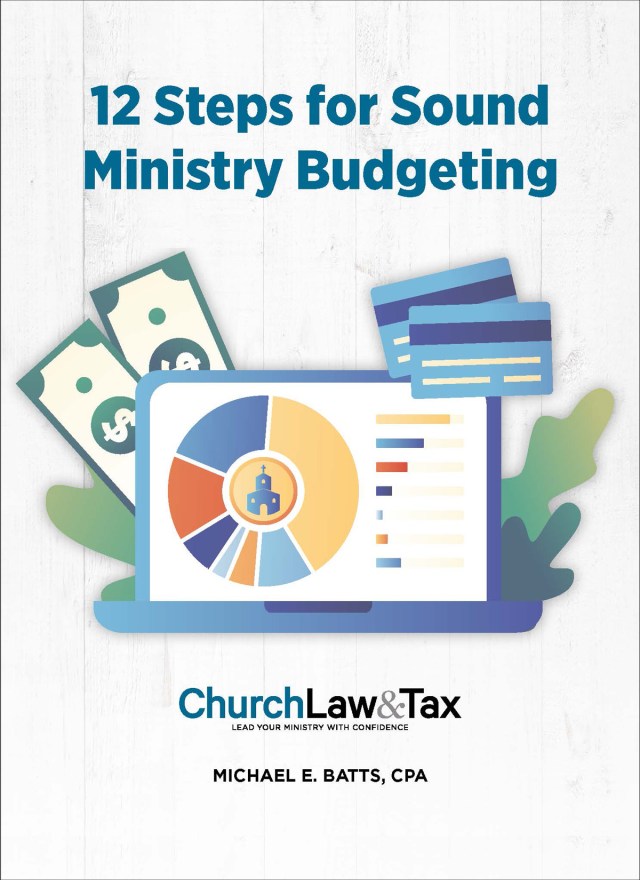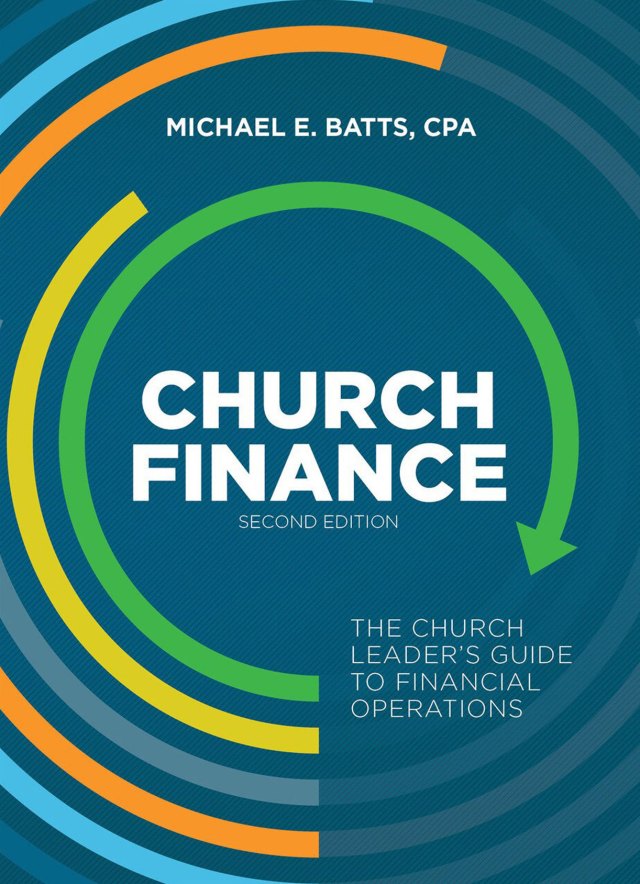Many churches have experienced one or more incidents of embezzlement. In some cases, the amounts are substantial. Church leaders often do not know how to respond to such incidents. Here are ten steps that can help.
1. Tax liability for embezzler
Embezzled funds constitute taxable income to the embezzler. The embezzler has a legal duty to report the full amount of the embezzled funds as taxable income.
This is true whether or not the employer reports it on the employee’s W-2 or 1099.
If funds were embezzled in prior years, the employee needs to file amended tax returns to report the illegal income. This is because the embezzlement occurs in the year the funds are misappropriated.
IRS Publication 525 states: “Illegal income, such as stolen or embezzled funds, must be included in your income on line 21 of Form 1040, or on Schedule C (Form 1040) or Schedule C-EZ (Form 1040) if from your self-employment activity.”
2. Employer not required to report funds on employee’s W-2
Federal law does not require employers to report embezzled funds on an employee’s W-2, or on a Form 1099. This makes sense, since in most cases an employer will not know how much was stolen. How can an employer report an amount that is undetermined?
Embezzlers are not of much help because they usually confess to stealing much less than they stole.
Therefore, W-2s or 1099’s filed on the embezzler’s behalf usually underrepresent what stolen.
3. Embezzled funds can be added to employee’s W-2 if actual amount is determined
In rare cases, an employer may be able to find how much was stolen and who stole it.
In such a case, the full amount may be added to the employee’s W-2. It can also be reported on a Form 1099 as miscellaneous income. Do not use this option if you are not certain of how much was stolen and who stole it.
4. Churches reporting funds may be exposed to tax liability if the amount isn’t accurate
In most cases, employers do not know the actual amount of embezzled funds. The embezzler’s “confession” is unreliable, if not worthless. Reporting inaccurate estimates on a W-2 or 1099 will be misleading.
Important point: don’t report embezzled funds an a W-2 or 1099 without proof of guilt. Doing so may expose the church to liability, including for filing a fraudulent Form 1099.
5. Church will not be penalized for failing to file a W-2 if actual amount of embezzled funds is not known
Employers that cannot determine how much was stolen and who stole it won’t be penalized for failing to file a corrected W-2 or 1099..
Employers that are certain of the identity of the embezzler, and the amount stolen, may be subject to a penalty under section 6721 of the tax code for failure to report the amount on the employee’s W-2 or 1099. This penalty is $50, or up to the greater of $100 or 10 percent of the unreported amount in the case of an intentional disregard of the filing requirement.
For employers that are certain how much was stolen, and who intentionally fail to report it, this penalty can be substantial. To illustrate, let’s say that church leaders know, with certainty, that a particular employee embezzled $100,000, but they choose to forgive the person and not report the stolen funds as taxable income. Since this represents an intentional disregard of the filing requirement, the church is subject to a penalty of up to 10 percent of the unreported amount, or $10,000. But note that there is no penalty if the failure to report is due to reasonable cause, such as uncertainty as to how much was embezzled, or the identity of the embezzler.
6. Churches can file a Form 3949-A to report suspected embezzlement
If the full amount of the embezzlement is not known with certainty, then church leaders have the option of filing a Form 3949-A (“Information Referral”) with the IRS. Form 3949-A is a form that allows employers to report suspected illegal activity, including embezzlement, to the IRS. The IRS will launch an investigation based on the information provided on the Form 3949-A. If the employee in fact has embezzled funds and not reported them as taxable income, the IRS may assess criminal sanctions for failure to report taxable income.
In many cases, filing Form 3949-A with the IRS is a church’s best option when embezzlement is suspected.
7. The crime of embezzlement is complete the moment the embezzler converts the money to his or her own use
In some cases, employees who embezzle funds will agree to pay them back, when confronted, if the church agrees not to report the embezzlement to the police or the IRS. Does this convert the embezzled funds into a loan, thereby relieving the employee and the church of any obligation to report the funds as taxable income in the year the embezzlement occurred? The answer is no.
Intent to ‘pay it back’ is not a defense
Most people who embezzle funds insist that they intended to pay the money back and were simply “borrowing” the funds temporarily. An intent to pay back embezzled funds is not a defense to the crime of embezzlement. Most church employees who embezzle funds plan on repaying the church fully before anyone suspects what has happened. One can only imagine how many such schemes actually work without anyone knowing about it. The courts are not persuaded by the claims of embezzlers that they intended to fully pay back the funds they misappropriated. The crime is complete when the embezzler misappropriates the church’s funds to his or her own personal use. As one court has noted:
The act of embezzlement is complete the moment the official converts the money to his own use even though he then has the intent to restore it. Few embezzlements are committed except with the full belief upon the part of the guilty person that he can and will restore the property before the day of accounting occurs. There is where the danger lies and the statute prohibiting embezzlement is passed in order to protect the public against such venturesome enterprises by people who have money in their control.
In short, it does not matter that someone intended to pay back embezzled funds. This intent in no way justifies or excuses the crime. The crime is complete when the funds are converted to one’s own use—whether or not there was an intent to pay them back.
8. Attempting to recharacterize embezzled funds as a loan
There is yet another problem with attempting to recharacterize embezzled funds as a loan. If the church enters into a loan agreement with the embezzler, this may require congregational approval. Many church bylaws require congregational authorization of any indebtedness, and this would include any attempt to reclassify embezzled funds as a loan. Of course, this would have the collateral consequence of apprising the congregation of what has happened.
9. Audits promote accountability against weak internal controls
Embezzlement almost always occurs because of weak internal controls. Internal controls are procedures that reduce the risk of misappropriation in the handling of cash and other assets.
Consider a professional CPA firm
One of the big advantages of having a CPA firm audit your church’s financial statements and procedures annually is that the CPAs will look for weaknesses in your internal controls, thereby substantially reducing the risk of embezzlement. In short, an audit promotes an environment of accountability in which opportunities for embezzlement (and therefore the risk of embezzlement) are reduced. And, the CPAs who conduct the audit will provide the church leadership with a “management letter” that points out weaknesses and inefficiencies in the church’s accounting and financial procedures. This information can be invaluable to church leaders. Yes, the cost of an audit can be substantial, but many consider it a reasonable investment to promote financial integrity.
Something else to consider:
- Only a certified public accountant (CPA) can “audit” a church’s financial statements and records. In most states it is unlawful for anyone other than a licensed CPA to use the term “audit” in examining an entity’s financial statements and records and issuing an opinion as to their compliance with generally accepted accounting principles.
- In some cases, churches are required to have an audit. Here are three common ways that this occurs: (1) A church’s bylaws or other governing document requires an annual audit. (2) Churches that issue securities as part of a fundraising program must have audited financial statements that are included in the “prospectus” or offering circular that is provided to investors and potential investors. (3) In some cases, a bank may require that a church have an audit in order to qualify for a loan.
- Churches can control the cost of an audit by obtaining competitive bids. Also, by staying with the same CPA firm, most churches will realize a savings in the second and succeeding years since the CPA will not have to spend time becoming familiar with the church’s financial and accounting procedures.
10. Complex legal and tax issues surround embezzlement
Cases of embezzlement raise a number of complex legal and tax issues. Our recommendation is that you retain an attorney to assist you in responding to these issues.





